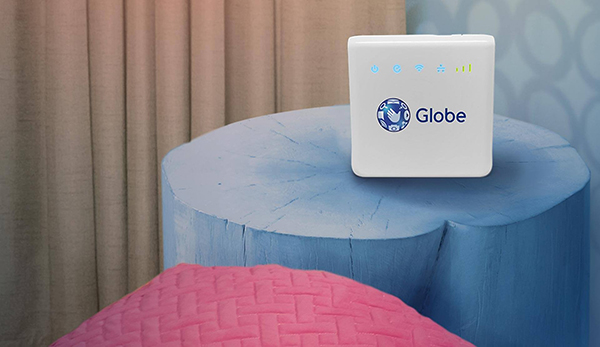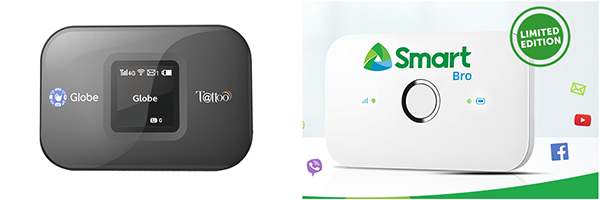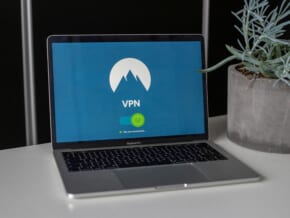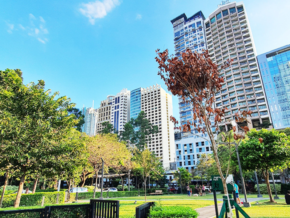A Guide to Maximizing Your Internet in the Philippines
Congratulations on making it to the Philippines! Now to face one of the problems that has continuously plagued both Filipinos and expats since its boom in the early 2000s: the Internet.

There’s no use hiding it. Internet speeds in the country aren’t exactly at par with regional and global standards as the country is lagging behind its neighbors in terms of infrastructure.
But worry not! With a little digging, we have gathered the best ways to maximize the country’s internet speeds, including the best providers, proper installation, how much you should be paying, and whether or not you should get the ever-popular pocket Wi-Fi.
Which ISP to go for?
The first question for anyone looking to have internet installed in their home or office is which internet service provider, or ISP, to go with. There are really only two to choose from: PLDT and Globe Telecom. (Yes, there is Smart Communications and Sun Cellular, but they are both under PLDT.) It goes to three when you count cable internet providers like SkyCable, but their subscribers are few and far between.
This largely depends on preference, but most people will say PLDT is better than Globe at this very moment, mainly due to the number of options they provide and their coverage.

PLDT has three main products they market under the PLDT Home brand: DSL, Fibr, and Ultera. Let’s go through each in quick succession:
- Home DSL. Short for Digital Subscriber Line, Home DSL is PLDT’s most common internet plan. Prices and speeds range from as low as P1,299/month for up to 3 Mbps of unlimited access all the way up to P3,499/month with speeds of up to 15 Mbps.
- Home Fibr. This makes use of PLDT’s fiber-optic technology, which promises to deliver faster and more reliable connections than your standard DSL. Plans for Fibr start at P1,699/month for speeds of up to 5 Mbps. The drawback: it’s only limited to certain areas of the country.
- Home Ultera. This is PLDT’s answer for those who don’t want a phone line or are not in a Fibr-supported area. It’s basically an LTE broadband plan operated by PLDT which starts at P699 monthly for speeds of up to 3 Mbps with a cap of 30 GB.

Globe Telecom, on the other hand, offers both LTE and DSL connections, with their most affordable coming at P1,299. This gives you speeds of up to 10 Mbps with a 50 GB cap for LTE connections and 100 GB for a DSL subscription.
Choosing the right product
Going for the right ISP all depends on how much you use your internet, how much you’re willing to spend, and where you’ll be living/using it the most (the last bit is probably the most important, but we’ll get to that later).

To better illustrate this, let’s take two people who are in need of internet. Let’s start with someone who does most of his work online; someone who’s young, has his/her own place, and relies heavily on a solid internet connection.
For this kind of user, we recommend either PLDT Home DSL or PLDT Home Fibr. Both are reliable thanks to PLDT’s reach, and the unlimited internet (albeit a bit slow) can be abused as much as you want.

Now, we move on to the executive. This guy is always on the go, often moving from one business meeting to the next. They’re sure to have a mobile phone plan, so internet at home is convenient but not used as much.
For this person, we recommend getting one of Globe’s internet plans. They’re a lot faster than PLDT’s Home Ultera for the same data allocation. The guy at the top still has to have fast download speeds, doesn’t he?
Keep your head up
Here’s a fun fact: no matter how fast your internet may claim to be, if it’s not installed right, you won’t get the most out of your hard-earned money.
This is why it’s best to have professionals do the hard work for you (it’s free anyway). You can ask them where the best place is to place your modem as well as your Wi-Fi router, a common feature in most postpaid internet plans in the country today.
However, there are ways you can improve your chances of having the fastest connection your plan can give after it’s been installed:
- Place the Wi–Fi router high and in the middle. We’re not suggesting you leave it hanging in the air in the middle of your pad, but at least have it somewhere as high and as centrally located as possible.
- Know how many devices can be connected. Modems make this easy: the number of ports will always equal the number of computers you can connect via a cable. Wi-Fi routers are a different story. They’ll usually have a device limit, usually somewhere between 5 and 10. Make sure you’re only connecting that many devices (preferably less) so you can make the most out of your speeds.
- Set a password for your Wi-Fi. Better yet, set up your router so that only devices you pre-approve can connect. If you’re a bit on the techie side, this is through your device’s MAC address. This is done via the device console, which can be accessed through your internet browser.
On pocket Wi-Fi
Having a pocket Wi-Fi is handy. It saves you from places that do not have their own Wi-Fi connection, can’t give you the password without you paying for something, or have really slow or clogged-up connections (read: free, password-less Wi-Fi).
You can go with any of the three mobile providers (Smart, Globe, Sun) if you’re looking to set up your own mobile hotspot, though we’d like to focus more on the actual device you’re being given.

There are two options available, but we seriously recommend skipping the more affordable options (unless you want to be frustrated with slow connections) and going for an LTE Pocket Wi-Fi device (black for Globe, white for Smart). These are capable of using the popular LTE network, which can give you speeds of up to 42 Mbps. It’s important that you set a password or have only your devices’ MAC address approved for access to your pocket Wi-Fi.
To know more about their services, kindly visit the following links or call their respective numbers:
PLDT Home: pldthome.com
Call 171 from any PLDT Landline or Smart and Talk N’ Text phone or 02-888-8171 from non-PLDT phones
Globe Telecom: www.globe.com.ph/internet
Call 211 from your Globe mobile phone or 02-730-1010
Images grabbed from broadband.globe.com.ph, smart.com.ph, PLDT Home on Facebook, www.globe.com.ph/mobile-wifi
Source: pldthome.com, globe.com.ph/internet













